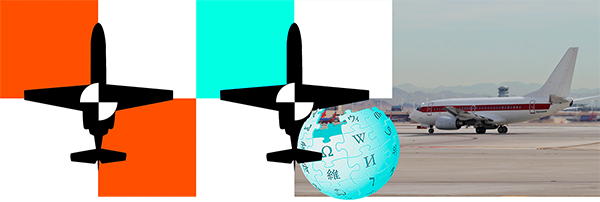N666DS Cessna Citation Aviation Accident 2025-05-22
FATAL ACCIDENT (6) - Daviator LLC, Cessna S550 Citation S/II, N666DS, near Montgomery-Gibbs Executive Airport (MYF/KMYF), San Diego, CA, May 22, 2025.
Interactive Map
Accident Information
| Approx. Accident Location | Aircraft Fat. | Aircraft Inj. | Ground Fat. | Ground Inj. | ASN Entry |
|---|---|---|---|---|---|
| 32°48'11.85"N, 117°6'22.32"W | 6 | 0 | 0 | 0 | Aviation Safety Network |
Aircraft Information
| Type | Operator | Registration | Serial Number | Manufacture Date |
|---|---|---|---|---|
| Cessna S550 Citation S/II | Daviator LLC | N666DS | S550-0056 | 1985 |
 |
 |
 |
 |
 |
 |
 |
 |
 |
 |
Videos
On the morning of May 22, 2025, a small business jet, believed to be a Cessna Citation S/II with the callsign “N666DS,” crashed into the Tierrasanta military housing community in San Diego while attempting to land at Montgomery-Gibbs Executive Airport.
Authorities have… https://t.co/wEI23VWD6J pic.twitter.com/923NUQpRKi— Intel Tower🗽 (@inteltower) May 22, 2025
Live ATC
RNAV 28R APPROACH PLATE
 |
RNAV 28R APPROACH PLATE |
ASX Accident Report
On May 22, 2025, at approximately 3:47 a.m. local time, a Cessna S550 Citation S/II business jet registered as N666DS crashed into a residential military housing community in San Diego, California, during an approach to Runway 28R at Montgomery-Gibbs Executive Airport (KMYF). The aircraft, operated by Daviator LLC and owned by pilot and Sound Talent Group co-founder Dave Shapiro, had departed Wichita-Colonel James Jabara Airport (KAAO) following an earlier leg from Teterboro, New Jersey. The flight encountered deteriorating weather conditions on approach, including low visibility and dense fog, compounded by a non-functional Automated Surface Observing System (ASOS) at KMYF, limiting situational awareness for the flight crew.
The aircraft, carrying six occupants, impacted terrain after descending below the RNAV 28R glidepath and striking high-tension power lines approximately two miles from the airport threshold. The resulting crash caused severe structural fragmentation and ignition of jet fuel, initiating multiple fires that engulfed at least 15 vehicles and 10 homes in the Tierrasanta neighborhood. The aircraft was destroyed, and both pilots were killed on impact. All fatalities occurred onboard the aircraft; no deaths were reported among residents, although at least eight individuals on the ground sustained injuries, including smoke inhalation and trauma from secondary evacuations.
Air traffic recordings confirmed that the crew was aware of the ASOS outage and inquired about nearby airport weather minima. Controllers relayed conditions from nearby Miramar and Brown Field airports. The final radio exchange reflected the crew’s concern regarding marginal weather, with visibility reported below 1/2 statute mile and ceiling obscured below 200 feet at Miramar. Despite this, the crew elected to continue the RNAV 28R approach. The aircraft's final ADS-B data showed it descending at a stable profile until point PENYY but then deviating below the vertical path and failing to maintain clearance from known obstacles, including the marked 554-foot powerline mast.
Post-crash investigation by the National Transportation Safety Board (NTSB) and Federal Aviation Administration (FAA) began immediately on-site. Investigators recovered wreckage fragments scattered over a quarter-mile radius. The aircraft's destruction precluded immediate confirmation of total occupants, but the FAA verified six persons were aboard. The Citation was built in 1985 and configured for private executive use. The flight data recorder and cockpit voice recorder, if present, were planned for recovery for further analysis. Preliminary indications do not point to fuel starvation, as extensive contamination from spilled jet fuel was evident across streets and structures, with hazmat teams deployed.
Among the deceased were three employees of Sound Talent Group, including the company’s founder. Their identities were confirmed based on FAA pilot certification records and company statements. The crash also resulted in significant damage to the local environment and infrastructure, with over 100 residents displaced. Emergency responders, including the military and municipal agencies, coordinated to evacuate the area and establish triage and decontamination zones. Jet fuel exposure required special treatment for several pets, and the Red Cross assisted in temporary housing relocation.
As of this report, the NTSB continues to document and analyze flight path data, meteorological overlays, and audio recordings. Investigators are also reviewing crew experience, maintenance logs, and airport navigational infrastructure failures. A preliminary report is expected within two weeks, while final findings may take up to a year. The event marks a rare but high-impact example of approach phase controlled flight into terrain (CFIT) under instrument meteorological conditions, with systemic weather communication issues contributing to spatial disorientation and final descent misalignment.
This page will be updated as more information becomes available.
Tracking and Social Media
- Flight Tracking: flightradar24, FlightAware, ADS-B Exchange, AirNav Radar
- Social Media: Facebook, Instagram, X (formerly Twitter), YouTube
Sources and References
Please help us by donating


